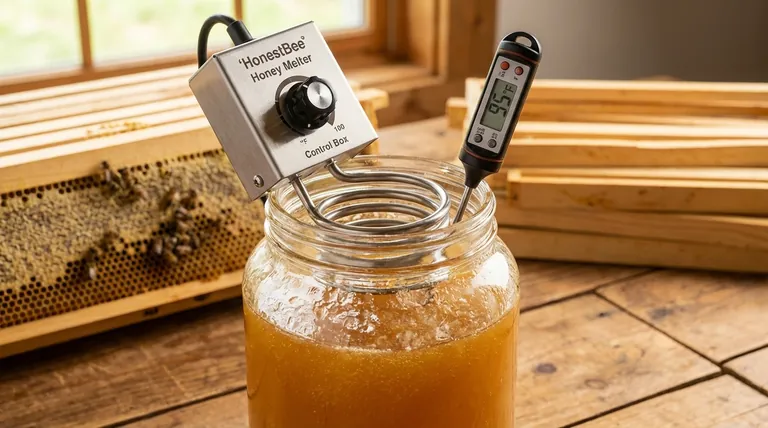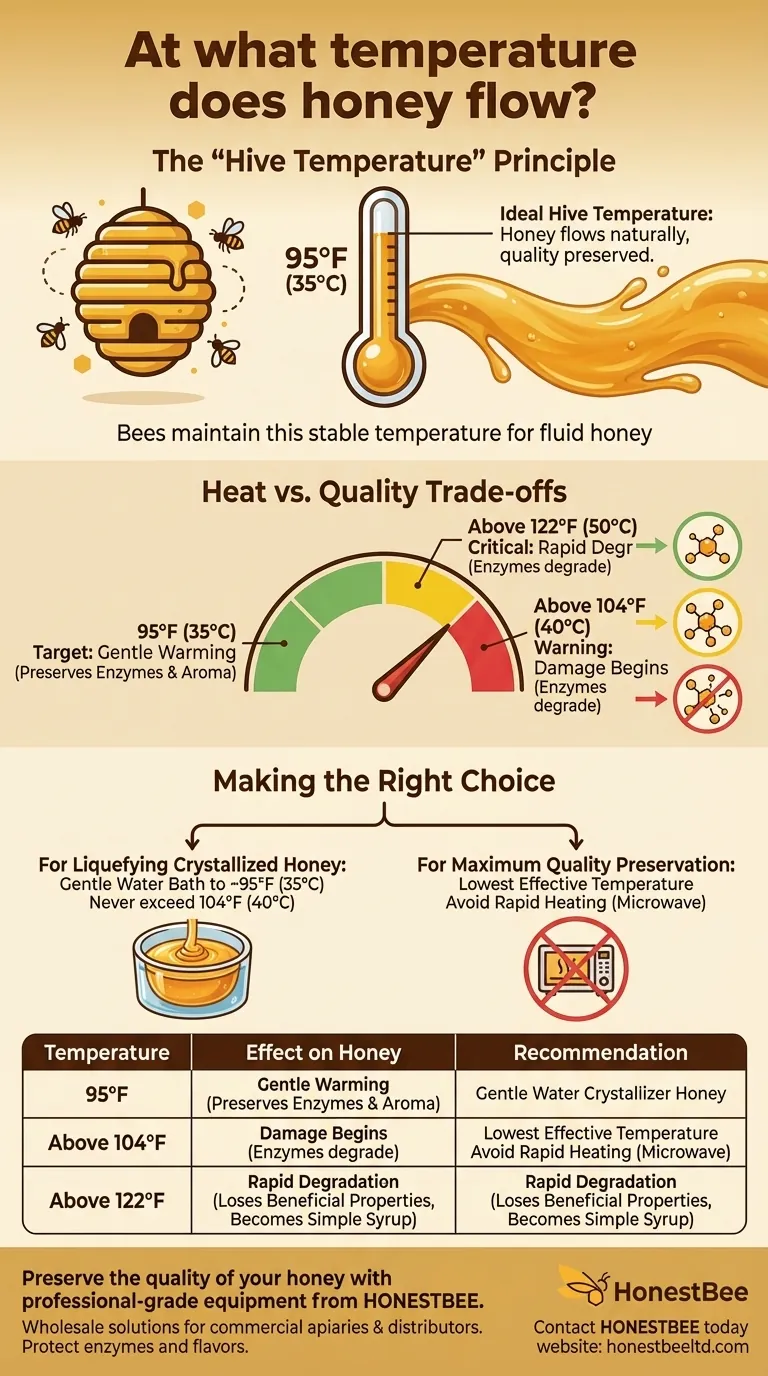To make honey flow effectively, you should aim for the natural temperature of a beehive, which is approximately 95°F (35°C). At this temperature, honey becomes liquid and easy to handle. Crucially, this gentle warmth liquefies crystallized honey without degrading its delicate enzymes and aromatic compounds.
The core principle is not just about making honey flow, but about doing so without damaging its quality. The ideal temperature is around 95°F (35°C), while exceeding 104°F (40°C) begins to compromise the very properties that make honey valuable.

The "Hive Temperature" Principle
Understanding why a specific temperature works requires looking at the honey's origin. Bees are master regulators of their environment for a reason.
### Why Bees Maintain This Temperature
Bees work to keep their hive at a stable 95°F (35°C). This specific temperature ensures their primary food source, honey, remains in a fluid, workable state for the colony.
### The Goal of Gentle Warming
When you gently warm honey to this natural hive temperature, you are simply returning it to its intended liquid state. This is the safest and most effective target for liquefying honey that has crystallized.
Understanding the Trade-offs: Heat vs. Quality
Applying too much heat is the most common mistake when handling honey. While it will make the honey flow faster, it comes at a significant cost to its quality.
### The Critical Threshold: 104°F (40°C)
Heating honey beyond 104°F (40°C) begins to damage its sensitive substances. Valuable enzymes and other compounds start to break down, diminishing the honey's unique properties.
### The Point of Rapid Degradation
Once honey is heated above 122°F (50°C), this degradation happens rapidly. At this point, you are fundamentally changing the honey's composition, stripping it of its beneficial qualities.
### What "Damage" Actually Means
Damaged honey loses its subtle aromas, flavors, and enzymatic activity. It effectively becomes a simple sugar syrup, losing the characteristics that distinguish raw, high-quality honey.
Making the Right Choice for Your Honey
Your goal determines how you should approach temperature. Always prioritize gentle, slow warming over fast, high heat.
- If your primary focus is liquefying crystallized honey: Gently warm it in a water bath to approximately 95°F (35°C) and ensure the temperature never exceeds 104°F (40°C).
- If your primary focus is preserving maximum nutritional and aromatic quality: Always use the lowest effective temperature and be patient, avoiding all forms of rapid heating like microwaves.
By respecting these temperature thresholds, you gain complete control over preserving the integrity of your honey.
Summary Table:
| Temperature | Effect on Honey | Recommendation |
|---|---|---|
| 95°F (35°C) | Ideal hive temperature; honey flows naturally without quality loss | Target for gentle warming |
| Above 104°F (40°C) | Enzymes and aromatic compounds begin to degrade | Avoid to preserve quality |
| Above 122°F (50°C) | Rapid degradation; honey loses beneficial properties | Never exceed this threshold |
Preserve the quality of your honey with professional-grade equipment from HONESTBEE. As a trusted wholesale supplier to commercial apiaries and beekeeping equipment distributors, we provide the precise tools you need to maintain optimal honey temperatures during extraction and processing. Our equipment helps you protect the valuable enzymes and flavors that define premium honey. Contact HONESTBEE today to learn how our wholesale solutions can enhance your operation's efficiency and product quality.
Visual Guide

Related Products
- Professional Thermostatic Conical Honey Melter
- Honey Concentrating Vacuum Heating Thickening Machine Dehumidifier for Honey
- Stainless Steel Manual Honey Press with Guard for Pressing Honey and Wax
- 0.5T Capacity Honey Dehumidifier Dryer with Vacuum Heating and Thickening Filtering Machine
- electric honey extractor honey centrifuge 3 frame honey extractor stainless steel honey frame extractor
People Also Ask
- How does the Bee Blanket help maintain honey quality? Preserve Enzymes with Gentle Hive-Mimicking Heat
- What is melter honey used for? A Low-Cost Ingredient for Bakers and Brewers
- Is it safe to heat crystallized honey? Restore Your Honey's Liquid State Safely
- Why is it important to heat honey slowly and evenly? Preserve Flavor, Nutrients & Value
- What equipment is commonly used for heating and processing honey? Essential Tools for Every Beekeeper



















